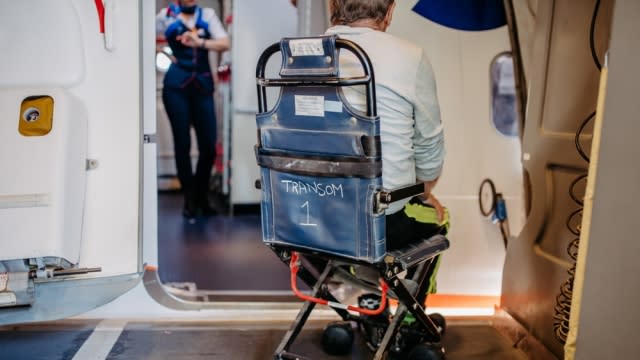Airplane restrooms to become more accessible for wheelchair users

The Department of Transportation announced new rules this week intended to make many airline restrooms more accessible for people in wheelchairs.
New single-aisle airplanes will be required to be large enough so a male in the 95th percentile of weight can approach, enter, and maneuver as necessary to use the aircraft lavatory. The new rules are only for new aircraft, meaning it could take years before most airplanes have accessible lavatories.
“Traveling can be stressful enough without worrying about being able to access a restroom; yet today, millions of wheelchair users are forced to choose between dehydrating themselves before boarding a plane or avoiding air travel altogether,” said U.S. Transportation Secretary Pete Buttigieg. “We are proud to announce this rule that will make airplane bathrooms larger and more accessible, ensuring travelers in wheelchairs are afforded the same access and dignity as the rest of the traveling public.”
SEE MORE: Solving the airline pilot shortage may require multiple solutions
The rule is authorized through the Air Carrier Access Act.
Double-aisle airplanes have been required to be wheelchair-accessible since 1992.
"The lavatory should be big enough to have the passenger, the on-board wheelchair, and a personal attendant entirely enclosed inside with the door closed. It should be possible for the passenger on the on-board wheelchair to pass through the lavatory door a sufficient distance into the lavatory to accomplish a transfer from the on-board wheelchair to the toilet seat," the rules for double-aisle airplanes state.
Making airplanes more accessible has long been an issue. The group All Wheels Up reports that many wheelchair users are concerned about flying due to the risk of injury or damage to their wheelchair.
The group also says because there is generally not a dedicated seat for wheelchair users, accommodating someone in a wheelchair can delay flights by an average of 16 minutes. The delay can cause over $1,000 in costs to airlines, All Wheels Up said.
